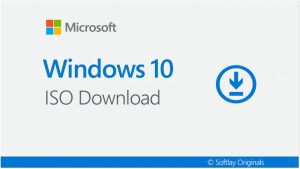- What is Service Host SuperFetch consuming high disk usage on Windows 10?
- You can disable SuperFetch: SysyMain task if 100% disk is utilized. In this guide, we will explain what does service host superfetch does and how you can kill it?
No doubt, Windows 10 is a much more advanced version as compare to its previous version. But there are still some drawbacks and bits of codes dating back to the pre-XP era. One of which is SuperFetch (also known as SysMain after the 1809 updates).
What is Service Host SuperFetch?
According to Microsoft SuperFetch maintains and improves system performance over time. It’s a task that you can only see using the Task Manager. The Superfetch predicts which applications the user will run next and pre-loads the necessary data in memory (RAM).

To perform this function it constantly runs in the background and analyzes the RAM pattern and learns what apps users mostly run after the startup. Over time SuperFetch tags these apps as “Frequently Used” preload these apps even before you need to open them, making your PC run faster and smoother.
Does SuperFetch Improve Gaming Performance?
Theoretically, SuperFetch does increases gaming performance. Some users also claim that running side by side also increases the FPS. However, SuperFetch is becoming a major concern for gamers. When it keeps running in the background, users face high disk usage problems, the PC gets slower, or the CPU starts overheating.
So simply disabling Service Host SuperFetch might do you a favor.
Disable Service Host SuperFetch (SysMain) Windows 10
If you are constantly dealing with high disk usage problems and you want to turn of SuperFetch, then follow these steps and see if it works.
1. Disable SysMain Using Services
- Press Windows + R and type services.msc and click OK.
- In the following window within the long list of items, find the Sysmain entry, double-click on it, and select Disabled.

- Click OK and restart your PC to check if the high disk usage problem is resolved.
- If the problem persists then SuperFetch is not the main cause. So you should again open Services and select Automatic (Delayed Start).
2. Stop Superfetch with Command Prompt

- In the Start menu search bar, type cmd and right-click on Command Prompt > Run as administrator.
- Type: sc stop “SysMain” and press Enter.
- Again type sc config “SysMain” start=disabled and press Enter
- Close command prompt and Restart your PC.
3. Disable the Service in the registry

If the above 2 didn’t work or you find Windows Registry more efficient, you can disable SuperFetch from here as well.
- Press the Windows + R key, and type the “Regedit” command in the Windows 10 search box before hitting enter.Once in it, follow this path: HKEY_LOCAL_MACHINE—System—CurrentControlSet—Control—Session Manager—MemoryManagement Select”PrefetchParameters“
- You’ll see “Enabled Superfetch”. Double-click on it to open it.
- Disable it by changing its value to 0.
- Click the “OK” button to save the changes.
4. Run Troubleshooter

Built-in help is provided by windows to identify and fix problems you encounter using Windows 10. It comes in handy when an unexpected error arrives. To open Troubleshooter:
- You need to type “troubleshoot” in start and troubleshooting will appear in your search results.
- Under System and Security, you need to click on “Fix Problems with Windows Update”
- You will be asked to carry on with a certain instruction that you need to follow
- After this, run the Windows Update to get the newest updates from Windows and possibly fix the service Host SuperFetch.
Related Windows 10 Issues and their Solutions:
There might be more processes consuming your CPU, you might check the link below:




